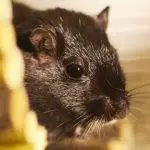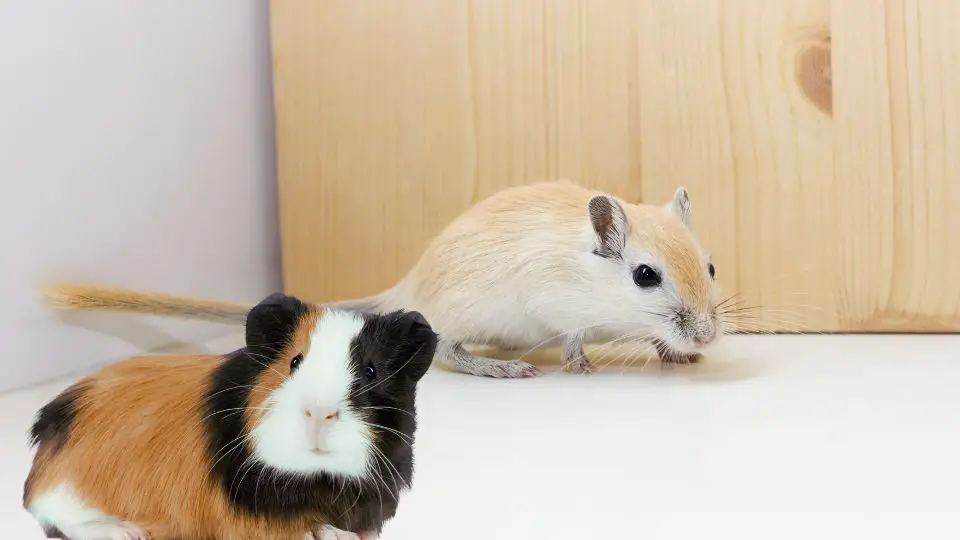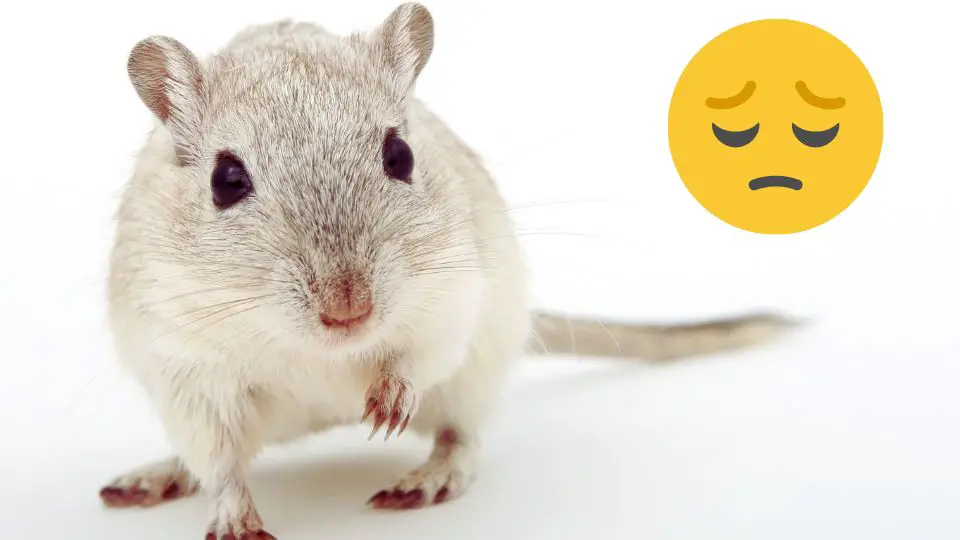Gerbils are small and agile creatures known for their energetic nature. One fascinating aspect of their behavior is their ability to run at impressive speeds.
Gerbils can run at speeds of around 6 to 8 miles per hour.
In this article, we will explore the speed capabilities of gerbils and uncover some interesting facts about their running abilities.
Average Speed of Gerbils
The average speed of gerbils can vary depending on various factors, including their age, physical condition, and individual genetics. On average, gerbils can run at a speed of around 6 to 8 miles per hour (10 to 13 kilometers per hour). However, note that gerbils are known for their quick bursts of speed rather than sustained running.
Gerbils have the ability to reach even higher speeds for short distances. Some gerbils have been observed running at speeds of up to 12 miles per hour (19 kilometers per hour) or more during moments of excitement or when they feel the need to escape from potential threats. These small rodents are incredibly agile and can dart around their environment with impressive speed.
It’s worth noting that the running speed of gerbils can also be influenced by their habitat and the available space for exercise. Providing a large and open environment with plenty of opportunities for running and exploring can help gerbils reach their full speed potential. Engaging them in playtime and providing toys and tunnels can further stimulate their natural instincts to run and explore.
How Do Gerbils Run?
Gerbils have a unique running style that showcases their agility and speed. When they run, they use a combination of their powerful hind legs and their long tail to maintain balance and control their movements.
Gerbils move in a bounding or hopping motion, where they alternate between their hind legs and their front legs. Their hind legs provide the main propulsion, while their front legs help with steering and balance. This running style allows them to move quickly and change direction swiftly.
Their long tail plays a crucial role in their running as well. The tail acts as a counterbalance, helping them maintain stability and make sharp turns without losing control. It serves as a rudder, allowing them to navigate through their environment with precision.
As they run, gerbils hold their bodies close to the ground, which helps reduce air resistance and enables them to move swiftly. They use their whiskers to sense their surroundings and avoid obstacles, ensuring they can maneuver effectively.
Factors Affecting Gerbil Running Speed
Several factors can influence your little pet running abilities:
- Age: Like many animals, gerbils tend to be more active and agile when they are young. As they age, their running speed may gradually decrease. Older gerbils may still enjoy running, but their overall speed and endurance may be reduced compared to younger gerbils.
- Physical Condition: The physical condition of a gerbil can play a significant role in its running speed. Gerbils that are in good health, maintain a healthy weight, and have strong muscles and joints are likely to have better running abilities. Regular exercise and a balanced diet are crucial for keeping gerbils in optimal physical condition.
- Genetics: Just like humans, gerbils inherit certain traits from their parents, including their running abilities. Some gerbils may have naturally higher running speeds due to their genetic makeup, while others may be slightly slower. While genetics can influence a gerbil’s potential running speed, note that individual differences can still exist within the same litter.
- Environmental Factors: The environment in which a gerbil lives can impact its running speed. Gerbils that have ample space and opportunities for exercise are more likely to develop and maintain better running abilities. A spacious cage with tunnels, wheels, and toys can encourage gerbils to run and play, contributing to their overall speed and fitness.
Environmental Factors
We have to emphasize on the environmental factors. The environment in which a gerbil lives plays a crucial role in its overall well-being, including its running speed. Gerbils are naturally active animals that require ample space to exercise and explore. Providing the right environmental conditions can significantly impact their running abilities and overall health.
Cage Size and Layout
The size of the gerbil’s cage or habitat is a critical factor in determining its running speed. Gerbils require a spacious living area that allows them to move freely and engage in their natural behaviors, including running. A larger cage provides more room for them to stretch their legs and reach higher speeds. Additionally, incorporating tunnels, ramps, and platforms into the cage design can encourage exploration and enhance their running experience.
Wheel Availability
Gerbils are known for their love of running on wheels. A properly sized and safe exercise wheel is a fantastic addition to a gerbil’s habitat. It provides them with a dedicated space to run and exercise, contributing to their running speed and overall fitness. Ensure the wheel is large enough for the gerbil to run comfortably without arching its back and that it has a solid running surface to prevent any injuries.
Substrate Selection
The type of substrate or bedding used in the gerbil’s cage can impact its running speed. Gerbils naturally love to dig and burrow, so providing a suitable substrate, such as aspen shavings or paper-based bedding, allows them to engage in these natural behaviors. A soft and comfortable substrate encourages gerbils to explore and run, enhancing their overall agility.
Safe and Stimulating Environment
Creating a safe and stimulating environment is essential for gerbil well-being and running speed. Remove any potential hazards, such as wires or small objects that could cause injury. Provide a variety of toys, tunnels, and climbing structures to keep gerbils mentally stimulated and physically active. An enriched environment encourages exploration and natural behaviors, contributing to their running speed and overall happiness.
Why Do Gerbils Run?
Running serves several important purposes for gerbils, both in the wild and in captivity. From our knowledge, here are the most common reasons why gerbils run:
- Exercise and Energy Expenditure: Gerbils have high energy levels and need regular exercise to stay healthy. Running allows them to burn off excess energy, maintain muscle tone, and keep their bodies fit. Regular running helps prevent obesity and promotes overall physical fitness.
- Exploration and Foraging: Gerbils are curious creatures that love to explore their surroundings. Running allows them to navigate their habitat, investigate new objects, and search for food. In the wild, gerbils run across their natural habitats in search of seeds, grains, and other food sources.
- Social Interactions: Gerbils are social animals that often live in groups or pairs. Running is part of their social behavior, as it allows them to engage in playful chases and friendly races with their cage mates. Running together strengthens social bonds and provides mental and physical stimulation.
- Natural Instincts: In the wild, gerbils are prey animals and must rely on their speed and agility to escape from predators. Running is a survival instinct that helps them evade potential threats and stay safe. Even in a domesticated setting, gerbils may retain these innate instincts to run as a way to protect themselves.
- Mental Stimulation: Running provides gerbils with mental stimulation and helps prevent boredom. It allows them to engage in natural behaviors and fulfill their instinctual need for physical activity. Running stimulates their senses and provides a sense of freedom and fulfillment.
Observing Gerbil Running
Gerbils are known for their playful and active nature, and observing their running behavior can be an enjoyable and fascinating experience. Here are some tips for observing gerbil running and understanding their playful antics:
Create an Enriched Environment
Gerbils thrive in an environment that provides opportunities for exercise and exploration. Set up their habitat with tunnels, climbing structures, and exercise wheels to encourage running and active play. Ensure that the cage is spacious enough for them to move around comfortably.
Watch for Energetic Bursts
Gerbils often display bursts of energy where they run rapidly in short bursts, known as “popcorning” or “zoomies.” These episodes are characterized by sudden bursts of speed, quick turns, and jumps. They may run around their cage, leap over obstacles, and perform acrobatic maneuvers.
Observe Wheel Running
Gerbils love running on exercise wheels, and it’s a common sight to see them spinning the wheel at high speeds. This behavior helps them burn off energy and provides both physical and mental stimulation. Observe how they use their hind legs to push the wheel and how their bodies move in rhythm.
Note Playful Chasing and Tag
If you have multiple gerbils, you may witness playful chasing and tag games. Gerbils will take turns chasing each other around the cage, often in a playful manner. They may leap over obstacles or engage in friendly wrestling. This behavior is a display of their social bonding and is a natural part of their interactive play.
Pay Attention to Body Language
While observing gerbil running, pay attention to their body language. A happy and engaged gerbil will have an upright posture, alert eyes, and a relaxed body. They may display a playful stance with their tail held high. If they’re stressed or uncomfortable, their body may be tense, and they may exhibit signs of hiding or freezing.
Conclusion
In conclusion, gerbils are remarkable runners with impressive speed capabilities. While individual speeds may vary depending on factors such as genetics, age, and physical condition, gerbils can reach an average running speed of around 6 to 8 miles per hour.
Their ability to navigate their surroundings with agility and speed is a testament to their natural instincts and adaptability. So, the next time you observe your gerbil darting around its cage or spinning the exercise wheel, take a moment to appreciate the incredible running abilities of these small yet remarkable creatures.







